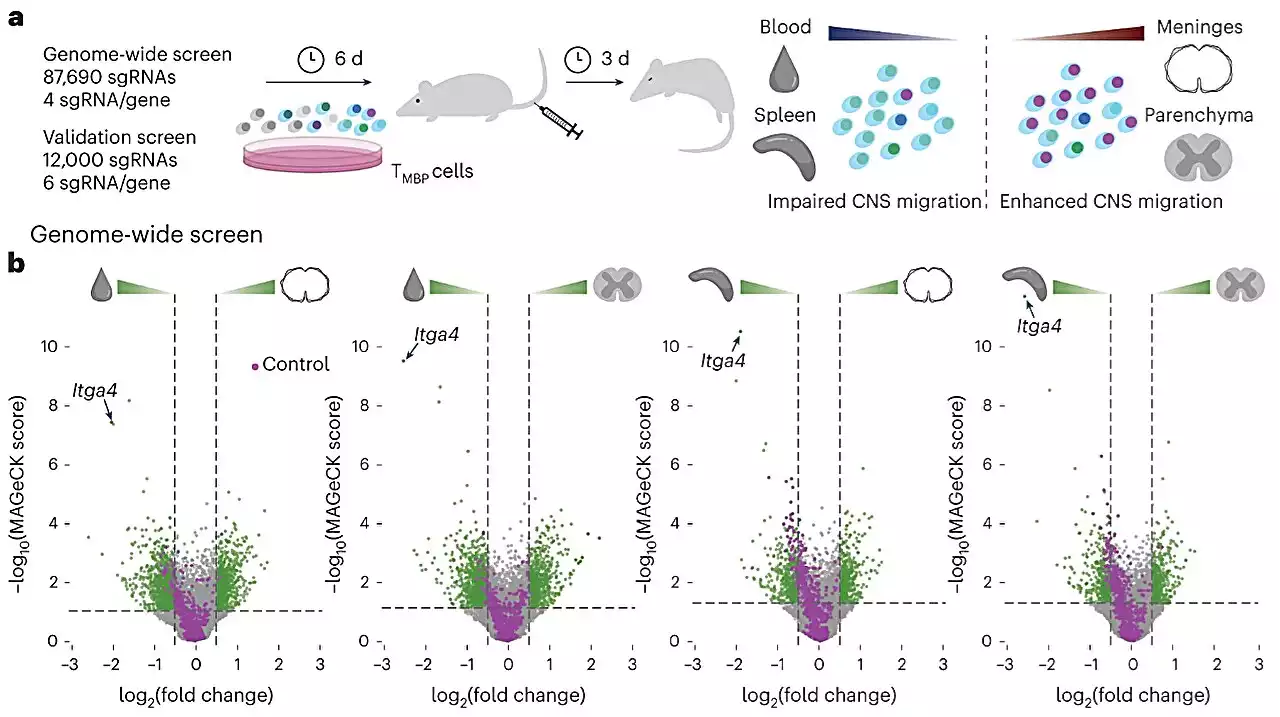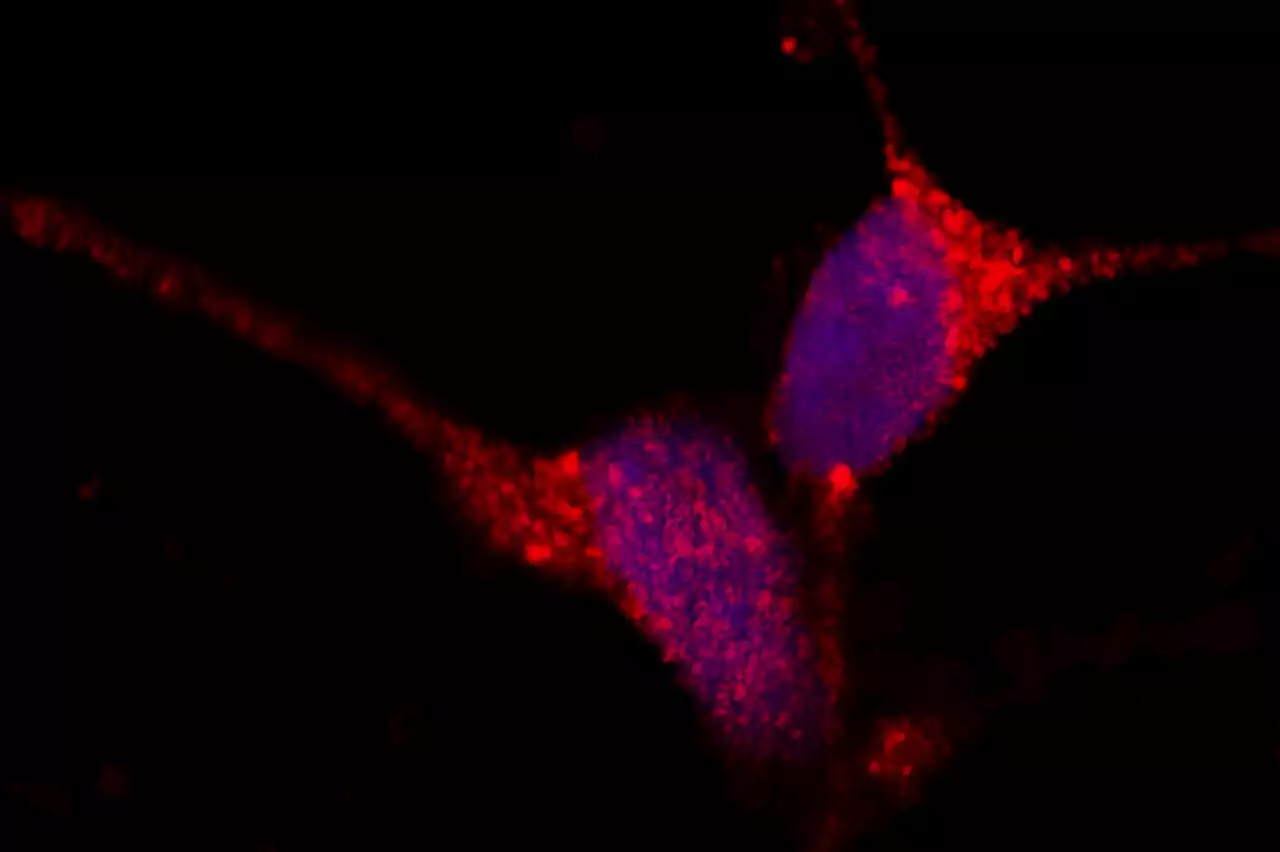By means of CRISPR screening, LMU researchers have provided the first ever comprehensive molecular characterization of T cell infiltration into the central nervous system of people with MS.
Multiple sclerosis is the most common disabling disease of the central nervous system in young adults. The disease is initiated when activated autoreactive T cells infiltrate the CNS and trigger a cascade of tissue injury. The importance of this T cell infiltration is well evidenced from studies in rodent models of the disease and in humans.
Genome-wide in vivo CRISPR screen in rat model The Munich researchers employed a gene editing approach that had not previously been used in connection with MS models. "CRISPR technology raises the possibility of conducting comprehensive and unbiased loss-of-function screens in disease models in vivo," explains Kawakami. Before now, genome-wide CRISPR screens have largely been utilized in investigations relating to cancer pathogenesis, but not yet in relation to MS.
In total, the researchers identified 5 essential inhibitors and 18 essential facilitators of this mechanism.
United Kingdom Latest News, United Kingdom Headlines
Similar News:You can also read news stories similar to this one that we have collected from other news sources.
 Key regulators involved in genesis of multiple sclerosis lesions identifiedBy means of CRISPR screening, LMU researchers have provided the first ever comprehensive molecular characterization of T cell infiltration into the central nervous system of people with MS.
Key regulators involved in genesis of multiple sclerosis lesions identifiedBy means of CRISPR screening, LMU researchers have provided the first ever comprehensive molecular characterization of T cell infiltration into the central nervous system of people with MS.
Read more »
 St. Jude Children's researchers better define hyperdiploidy in childhood B-ALLHyperdiploidy is a genetic condition observed in cancer cells, where the cells contain more chromosomes than usual.
St. Jude Children's researchers better define hyperdiploidy in childhood B-ALLHyperdiploidy is a genetic condition observed in cancer cells, where the cells contain more chromosomes than usual.
Read more »
 Researchers identify key steps to toxic protein accumulation in Alzheimer's and other diseasesUnder normal circumstances, tau protein is part of the brain's infrastructure, important for stabilizing neurons into their proper shapes. But sometimes tau gets knotted up into tangles and turns toxic, injuring brain tissue and causing tauopathies, a group of brain diseases characterized by problems with learning, memory and movement. Alzheimer's disease is the most common tauopathy, but the group also includes Parkinson's disease, chronic traumatic encephalopathy (CTE) and several rare genetic conditions.
Researchers identify key steps to toxic protein accumulation in Alzheimer's and other diseasesUnder normal circumstances, tau protein is part of the brain's infrastructure, important for stabilizing neurons into their proper shapes. But sometimes tau gets knotted up into tangles and turns toxic, injuring brain tissue and causing tauopathies, a group of brain diseases characterized by problems with learning, memory and movement. Alzheimer's disease is the most common tauopathy, but the group also includes Parkinson's disease, chronic traumatic encephalopathy (CTE) and several rare genetic conditions.
Read more »
 Obesity is a dangerous disease that shares key features with cancer, researchers sayAlthough obesity has been recognized as a disease by the World Health Organization (WHO) since 1948, its identity as a disease may not be widely perceived the same way as other health conditions.
Obesity is a dangerous disease that shares key features with cancer, researchers sayAlthough obesity has been recognized as a disease by the World Health Organization (WHO) since 1948, its identity as a disease may not be widely perceived the same way as other health conditions.
Read more »
 95% of NFTs now totally worthless, say researchers'Even the most prominent collections are struggling to maintain demand'
95% of NFTs now totally worthless, say researchers'Even the most prominent collections are struggling to maintain demand'
Read more »
